The answer to the question in the title is this: Maybe. By now, most Catholics know that Pope Leo XIV’s surname is Prevost, so I’m sure historians and animal lovers will soon be digging into his family history to find out if one of his ancestors was a French naturalist or something who gave his name to this delightful squirrel.
Behold the Prevost Squirrel!
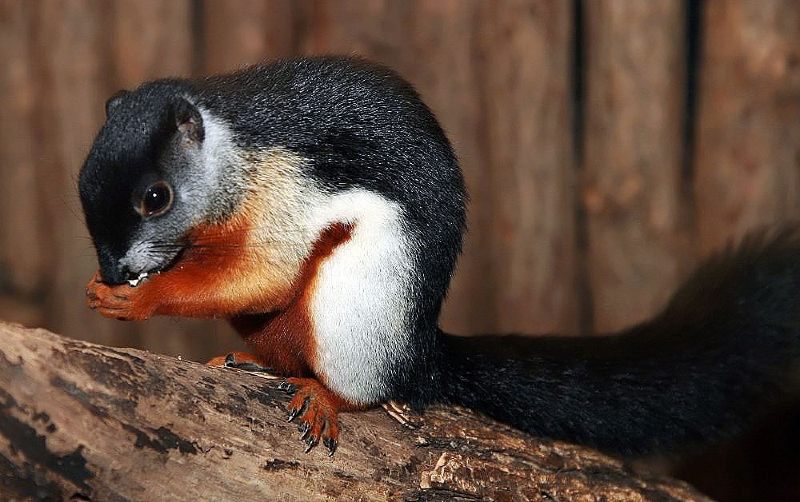
That’s its actual name, and you have to admit, he’s kinda cute. An added dimension of his charisma is that his wardrobe is not as, hmm…shall we say…unimaginative as the pope’s. 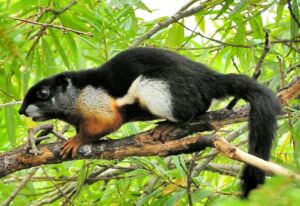 This squirrel’s tri-color coat is absolutely vibrant.
This squirrel’s tri-color coat is absolutely vibrant.
The Wikipedia article says that the Prevost Squirrel is “among the most colourful mammals in the world with its black upperparts and tail, reddish-orange underparts, whitish thighs and flanks, and grey to grey-white cheeks.”
In some areas of Asia they have olive-colored fur in place of the grey, whoa! Definitely one of the more stylish mammals I’ve ever seen.
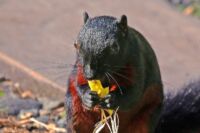 Like popes, these guys are on the endangered species list. Just kidding! In fact, they are in the “least threatened” species category because they’re so fast and can jump huge distances when they need to make a quick escape. They’re also very adaptable and tolerant of habitat changes which makes them true survivors.
Like popes, these guys are on the endangered species list. Just kidding! In fact, they are in the “least threatened” species category because they’re so fast and can jump huge distances when they need to make a quick escape. They’re also very adaptable and tolerant of habitat changes which makes them true survivors.
These squirrels are very numerous in Indonesia, Malaysia, and the Island of Borneo. No doubt, the far eastern connection adds to their mystique.
The Name(s)
The name is a bit of a mystery, but that too is part of the charm. Technically, this species is called Prevost’s Squirrel being named for a French geologist, Louis-Constant Prévost (1787– 1856)…who has no known connection to the animal!
His connection to the pope is probably even more tenuous, and it might just take an authority like the pope to solve that mystery. As far as we know, the 19th century Parisian geologist specialized in underwater volcanoes and never travelled to the Far East. So there you go.
As to the biological name, I think it’s as colorful as this squirrel’s outfit. The species is called the
Callosciuri prevostii
which is a Latin name but has Greek all over it. In Greek, kalo means “beautiful” and sciuri is a hybrid word formed by skia, “shadow”, and oura, “tail”—so this one is literally the lovely shadow tail squirrel. Didn’t I tell you this guy was marvelous?
The Family
Needless to say his biological name reflects the absolutely dynamic family from which he hales, called the sciuridae: the very large and diverse squirrel clan. It has  272 species and an additional 42 species of flying squirrels. Amazing creatures!
272 species and an additional 42 species of flying squirrels. Amazing creatures!
I would, however, advise you to please avoid using that awful term rodent when talking about squirrels. Horror of horrors!
The squirrels themselves are quick to distance their breed from their ratty cousins, pointing out clear differences in tails, bone structure, diet, and habitats, etc.—and correctly so. They insist that exalted tree dwellers are far superior to the street thugs who inhabit sewers. Anyway, that’s an ancient family feud that we’re not going to resolve in a short article.
But a few other of Prevost’s direct cousins are an enormously fun and idiosyncratic bunch, a couple of which he’s very proud. His family includes
- Marmots (as in woodchucks, ground hogs: I’m sure we can all think of one famous Pennsylvania marmot called Puxatawny Phil);
- Those cute little chipmunks (Prevost claims to know Alvin, Simon, and Theodore personally, but he brags a lot, so I’m skeptical); and
- Prairie dogs (Note: they will bark, I mean “chuff” at you if you call them dogs. They’re squirrels!)
All in all, this sciuridae family is a fun bunch that gets loads of attention in popular culture, even if they can be a bit annoying presences in your back yard or around your birdfeeder.
Amazingly Versatile
I think that anyone who has spent any time watching the antics of squirrels surely must marvel at the versatility of this little creature. They are the ninja warriors of the animal kingdom. Here’s why:
- The average tree squirrel can leap up to ten times his own body length. He can do that because of his disproportionately long and elastic hind legs that act like the rubber band on a slingshot;
- He also has an obsessive way of getting whatever he wants; he’s relentless, and this is best illustrated by his front incisor teeth which never stop growing because they’re always being worn down by chewing on inedible things—or perhaps I should say chewing through things to get to his prize;
- Squirrels can run up to 20 mph when they need to scoot; they can add amazing evasion tactics by running in a zig-zag fashion, so it’s virtually impossible to catch them;
- Their extremely sharp claws allow them to hang on to just about anything that has texture and gives them an astonishing ability to climb things;
- Sub-point 1: They can also scurry sideways on tree trunks; if you spot one, he’s likely to disappear around the back of the tree in the next second;
- Sub-point 2: His hind feet can rotate backwards which is why he can hang upside down on a tree and eat things or just glare at you from above like you’re the one who needs a gymnastics lesson;
- They’re intelligent, curious, and insistent little things. Squirrels have an amazing ability to employ trial-and-error tactics to achieve success, as has been
 demonstrated in numerous amazing “squirrel obstacle course” videos on the Internet (I’ve posted a hilarious one below);
demonstrated in numerous amazing “squirrel obstacle course” videos on the Internet (I’ve posted a hilarious one below); - They hide nuts all over the place because they don’t trust other squirrels, who have been known to spy on their mates and steal their stash; one squirrel, the North American Fox squirrel, has merited a 90% success rate at remembering where he hid his food;
- They always remain fantastically balanced whether perched on a branch, running, or flying from one branch to another; it’s all due to their twitchy tail that acts as a rudder to keep them upright in any circumstance, and yes, for that reason, they do always land on their feet when they fall (cats have nothing on these guys);
- Finally, don’t even think of sneaking up on them or trying to catch them unawares; due to the placement of their eyes toward the sides of their heads, their peripheral vision is many degrees wider than that of humans.
Squirrely talents are a double-edged sword, I realize. On the one hand, their versatility makes them extremely adaptable and resourceful for survival. On the other hand, when they are coming to get your birdfeeder, there’s almost nothing you can do to stop them.
I always strive to be on the side of the angels, but I can say with assurance that if I’m ever in a fight that involves squirrels, I definitely want to be on the side of the squirrels.
Squirrel Hall of Fame
While much more can be said about this marvelous little creature, I thought it best to show you some of their star performers and real beauties. As far as tree squirrels go, they are generally divided by their colors and unique characteristics as well as by their geographic regions.
Red Squirrel (Eurasia)
This one has real class. The tufty ears and the red coloring (which darkens in the winter) make them a beautiful animal to come upon in the wild, especially when they are set against a background of snow. Their territory spans from England to Russia.
Black and White Squirrels (North America)
These beauties are both genetic offshoots of the Eastern Gray Squirrel and the Fox Squirrel, which are probably the most common squirrels we see in North America.
The black squirrels result from a pigmentation (melanistic) that turns their fur black, while only a small percentage of them actually become as jet black as the one in the picture above. They are mostly found in the Great Lakes region including Ontario.
The white squirrels have the opposite pigmentation (leucistic) and are generally found in central and southeastern states. Brevard, North Carolina and Marionville, Missouri, compete for the title of “White Squirrel capital of the world” and enjoy the fame (and tourism) that the white squirrels bring to their local area.
The Giant Squirrels (Southeast Asia)
Indian Giant Squirrel
Believe it or not, there are a good number of these in Asia, both of the tree-dwelling type and of the flying type. The name usually depends on where they are found: India, Malabar, even Philippines. This tree giant from India is a real beauty:

Malaysian Giant Squirrel
The distinct feature of a Malaysian giant is its yellowish underbelly, which looks kind of cool when hanging over your head looking down at you. He can measure up to 3 feet in length.
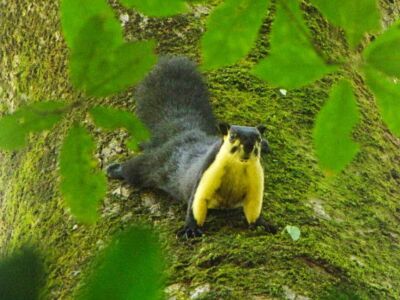
The Flying Squirrels (Southeast Asia)
And just to prove that God has a sense of humor, He gave us flying rodents, er, squirrels that are the size of small dogs. Imagine seeing one of these cloaked and furry monsters flying over your head and landing on a tree branch next to you.
It’s more accurate to say they glide rather than fly because they don’t actually have wings for flight. They have cartilaginous membranes that extend from the tips of their front toes to their feet and catch the air like a parachute.
Their average jump from one tree to another is 150 feet, but they’ve been known to glide as far as 300 feet. The most spectacular of these is the…
Bhutan Giant Flying Squirrel
He can measure a full four feet in length (body and tail), which makes him the largest squirrel on the planet. His habitat is the Himalaya Mountains in Asia spanning, India, Nepal, and Bhutan.
It might be a bit frightening to stumble upon one of these at night in a jungle. And a rather blurry picture of one of these in flight. (Yes, it looks kind of like a bat with a tail, but it’s easily ten times the size!)
Human Mimics
Nowadays, certain insane members of the human species have taken up the flying squirrel routine and are jumping off mountains and high bridges in what are known as wingsuits. I call the jumpers wing-nuts or nut jobs, nutty names of which the squirrels would approve, I’m sure.
Conclusion
Squirrels. They’re kind of a natural and sacred window of versatility. A breed that can teach us something about the virtue of persistence and God’s incredible creativity.
Come to think of it, after I finish writing this newsletter, I’m going to write to the Vatican to ask Papa Prevost to appoint the Prevost’s Squirrel as the official papal squirrel. Why not? Stranger things have happened at the Vatican, I’m sure.
Special Feature
—
Photo Credits: Prevost Squirrel side view (David J. Stang); Prevost Front view eating (Charles J. Sharp); Prevost on branch (Karakal); Red (hedera.baltica); White (Rhododendrites); Black (Marc Steensma); Prairie dog (Steve Polkinghorne, Newton Abbot); Tree Squirrel on fence (Dismas); Indian Giant (Yathin S Krishnappa); Malaysian with yellow coloring (Rohit Naniwadekar); Bhutan Giant (Umeshsrinivasan); Squirrel in flight (Pratik Jain); Wingsuits on mountain (Leo-setä); Wingsuit in flight (Wingsuiting); other squirrel pictures from Pixabay.
[Note: This article is a reproduction of the Sacred Windows Email Newsletter of 8/10/25. Please visit our Newsletter Archives.]
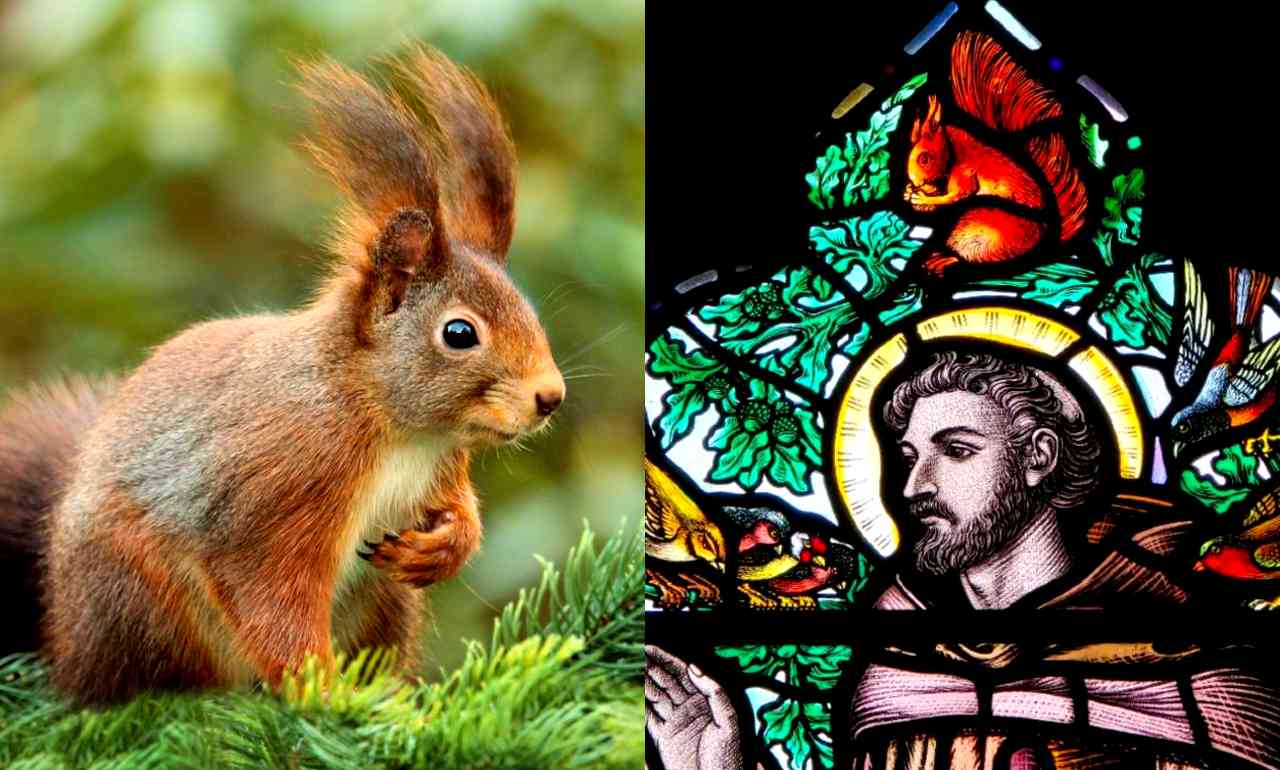
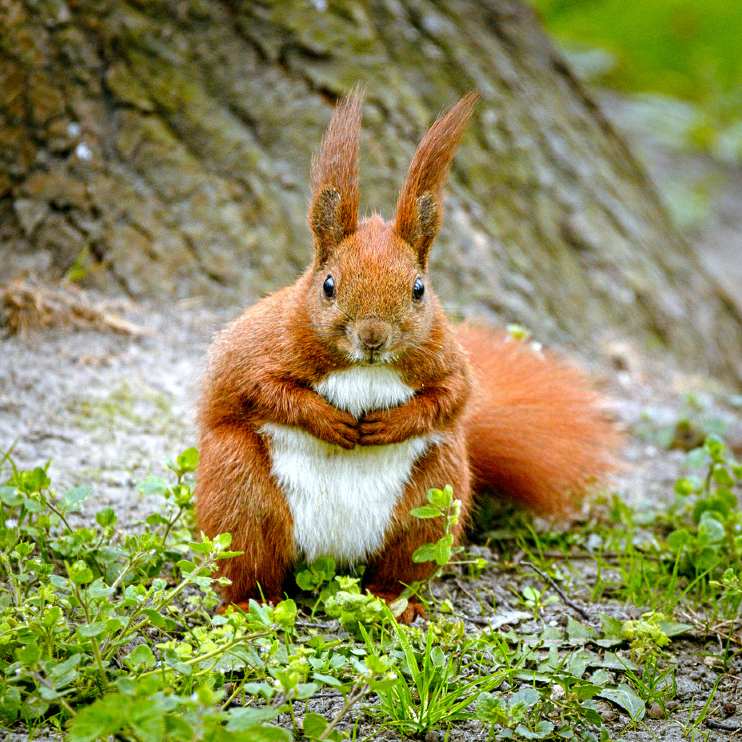
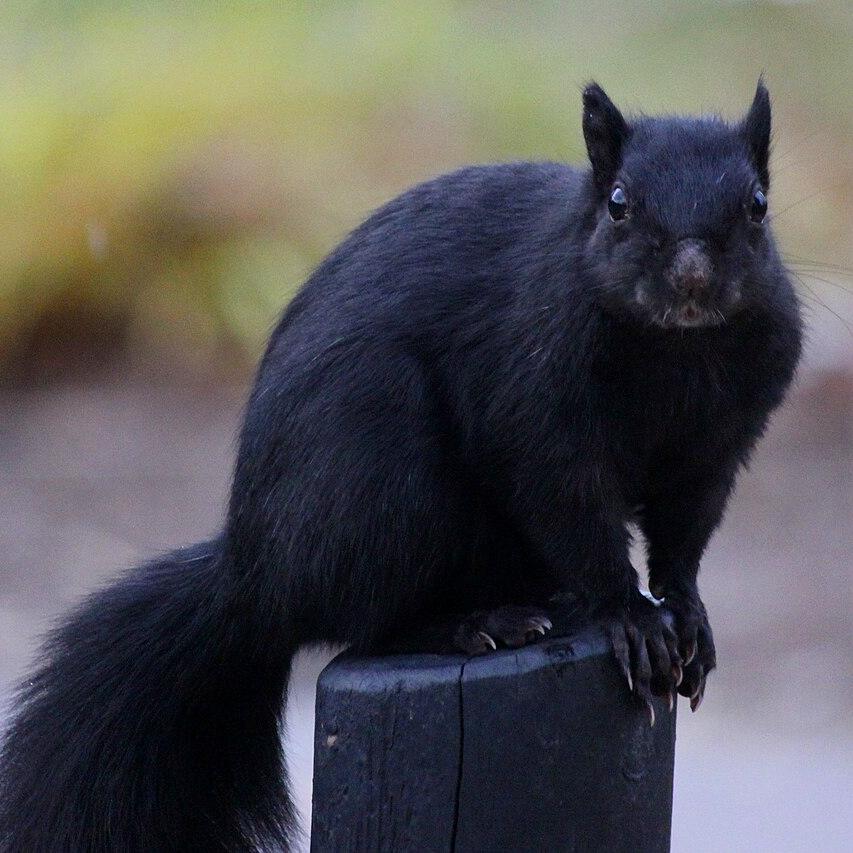
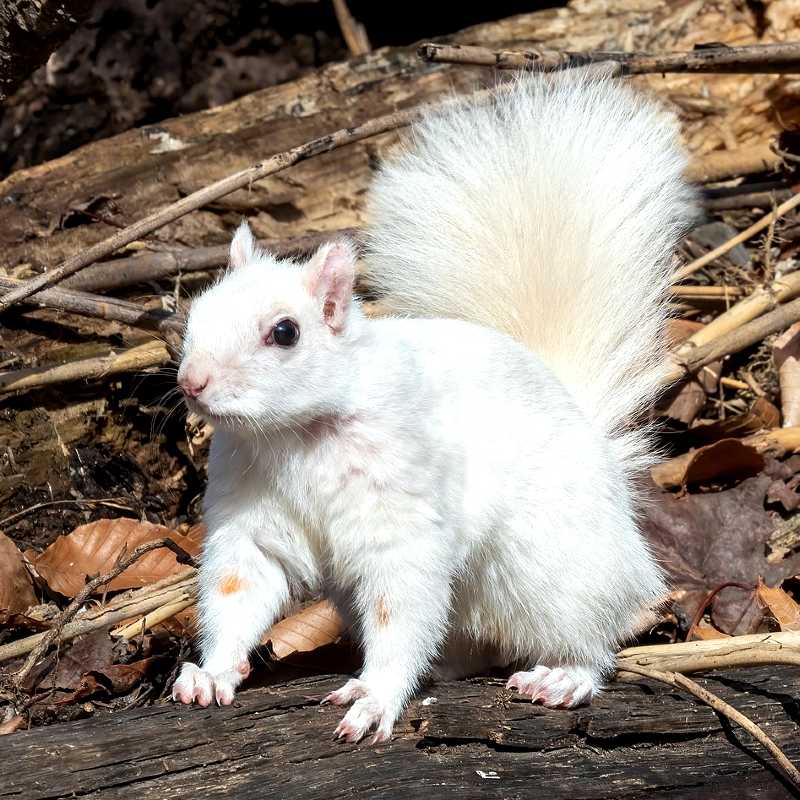
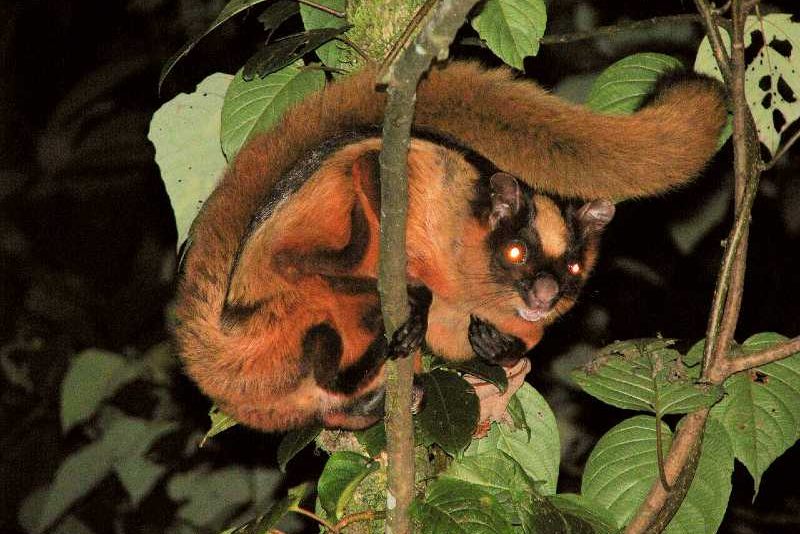
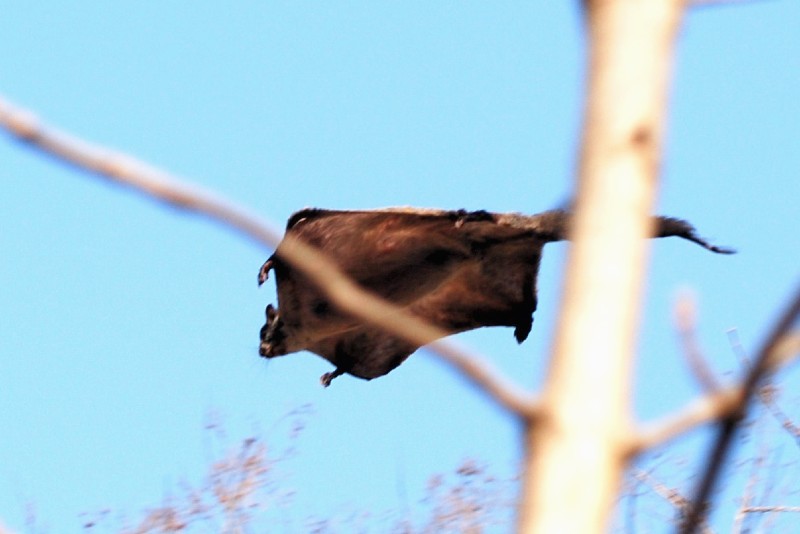


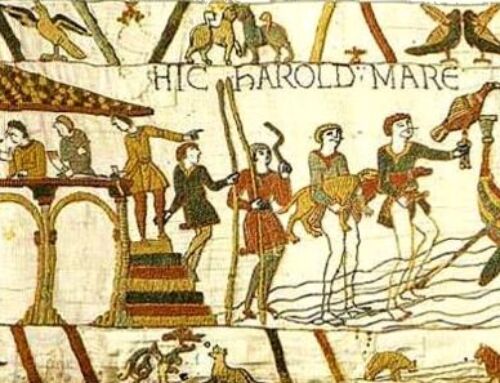


Leave A Comment